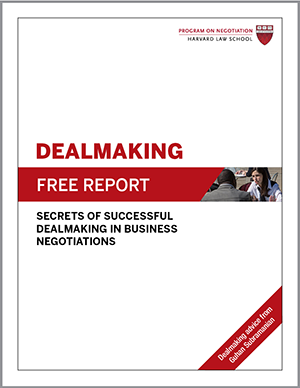
Donald J. Trump entered the Oval Office with considerable dealmaking experience in the business world. But his blank slate as an elected official combined with his fluctuating positions on key issues such as immigration and tax policy throughout the presidential race left many wondering what his negotiating style would be.
In the months between being elected U.S. president on November 8, 2016, and taking office on January 20, 2017, Trump engaged in several negotiations that appeared to offer clues about the negotiating style he would use as negotiator-in-chief.
A Disregard for Protocol
As part of the peaceful transfer of executive power in the United States, newly elected presidents traditionally rely on State Department briefings to ensure they follow the intricate protocol involved in taking and returning congratulatory phone calls from heads of state. Calls are carefully vetted and sequenced to convey the importance of key U.S. strategic partnerships.
But in the weeks after his election, Trump took calls from world leaders in what seemed to be random order and without identity verification. For example, Trump reportedly spoke to at least nine world leaders, including the heads of Egypt, Saudi Arabia, and Turkey, before talking to United Kingdom prime minister Theresa May, according to the Guardian. The disregard for protocol created anxiety in Europe and fueled speculation that the Trump team was unprepared for his victory.
In another break from tradition, the tone of some of these calls was unusually casual. Rather than inviting May to visit the White House, for example, Trump asked her to let him know if she traveled to the United States. Given the complex web of relationships among the United States, India, and Pakistan, Trump’s reported enthusiastic response to Pakistani prime minister Nawaz Sharif’s invitation to visit his country reportedly left Washington diplomats “slack-jawed,” according to the New York Times. And Trump’s decision to include only his daughter Ivanka Trump, who was negotiating a business deal with a Japanese-government-backed company at the time, in a brief meeting with Japanese prime minister Shinzō Abe stoked criticism that the Trumps were using the presidency to advance their personal financial interests.
A Provocative Phone Call
On December 2, 2016, President-elect Trump created a stir by taking a phone call from Taiwanese president Tsai Ing-wen. For decades, the U.S. government had deferred to the Chinese government’s “One China” principle, which views Taiwan and China as two parts of one sovereign state. In adherence to that principle, no American president or president-elect had spoken directly to the head of Taiwan’s government since 1979.
Though many observers at first suspected Trump had accepted the phone call by mistake, it appeared to have been deliberately orchestrated by Taiwan, the New York Times reported. Working as a lobbyist for Taiwan, former senator Bob Dole coordinated with Trump’s staff to set up meetings with Taiwanese officials, Justice Department disclosure documents show. The lobbying culminated in a new strategy for engagement with Taiwan.
“By showing strength at the beginning, [Trump] may hope to gain advantages in bargaining later with the Chinese on many key issues,” professor Zhang Baohui of Lingnan University in Hong Kong told the Times. But Paul Haenle, a National Security Council staff member under former presidents George W. Bush and Barack Obama, told the Washington Post that “catching China by surprise . . . presents enormous risks and potential detriment” to the Sino-American relationship.
Setting a Potential Precedent with Negotiating Style
During the presidential campaign, Trump repeatedly promised that, if elected, he would persuade Indiana-based Carrier Corporation to cancel its plans to outsource over 2,000 manufacturing jobs to Mexico, in part by threatening to impose stiff tariffs on Carrier and other U.S. companies that send jobs abroad.
After being elected, Trump said he was reminded of this promise when he heard a Carrier employee say on TV that he was sure his job would be safe with Trump as president, as reported by the Post. This prompted the president-elect to reach out to Carrier’s parent company, United Technologies Corp., about keeping the jobs in the United States. He assigned incoming vice president Mike Pence to negotiate the details.
State officials reportedly promised Carrier a $7 million incentive package in return for keeping the jobs of 800 workers at an Indianapolis furnace plant and investing in its plants. The company still moved 1,300 jobs to Mexico, according to the Wall Street Journal.
In a 2019 Negotiation Journal article titled “Trump’s Lessons for Business Negotiators,” MIT Sloan School of Management’s Thomas Kochan writes that in the Carrier negotiation and others that followed, Trump’s negotiating style included settling for small initial concessions, as long as they were accompanied by “sufficient displays of deference that feed his ego.” Kochan continues, “Savvy business leaders will continue to give those who adopt this negotiating style what they are looking for—emotional gratification rather than substantive gains.”
Have you noticed consistency in your counterparts’ negotiating style over time, or have they exhibited different negotiation styles?





